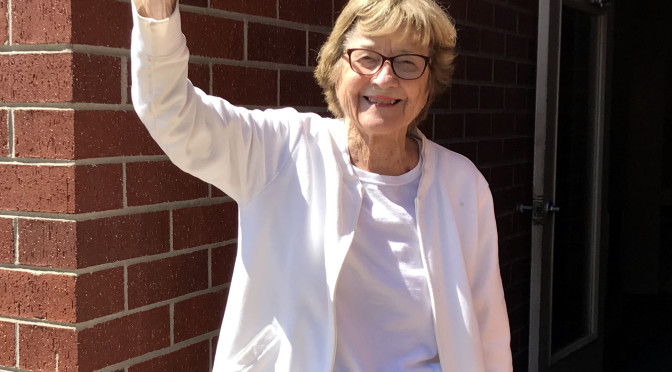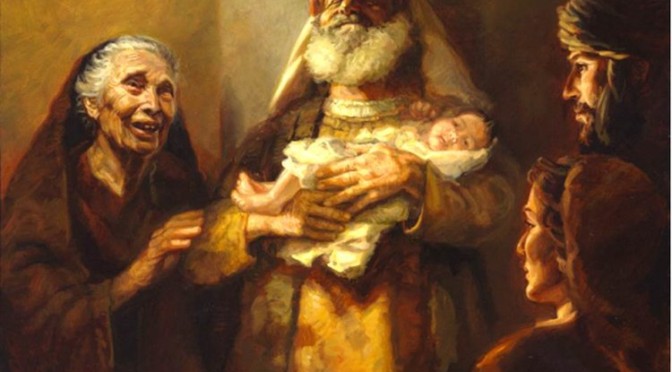**sermon art: The Transfiguration of Christ by Earl Mott (b. 1949)
Caitlin Trussell with Augustana Lutheran Church on February 23, 2020
[sermon begins after Bible reading]
Matthew 17:1-9 Six days later, Jesus took with him Peter and James and his brother John and led them up a high mountain, by themselves. 2 And he was transfigured before them, and his face shone like the sun, and his clothes became dazzling white. 3 Suddenly there appeared to them Moses and Elijah, talking with him. 4 Then Peter said to Jesus, “Lord, it is good for us to be here; if you wish, I will make three dwellings here, one for you, one for Moses, and one for Elijah.” 5 While he was still speaking, suddenly a bright cloud overshadowed them, and from the cloud a voice said, “This is my Son, the Beloved; with him I am well pleased; listen to him!” 6 When the disciples heard this, they fell to the ground and were overcome by fear. 7 But Jesus came and touched them, saying, “Get up and do not be afraid.” 8 And when they looked up, they saw no one except Jesus himself alone. 9 As they were coming down the mountain, Jesus ordered them, “Tell no one about the vision until after the Son of Man has been raised from the dead.”
[sermon begins]
I have a Christian friend who gets on a lot of high horses about things Christians tend to do without thinking about them. In the middle of whatever roll he’s on at the moment, he’ll often wing out an alternative option to whatever thing it is that we do. One such high horse has to do with bowing our head and closing our eyes to pray. [I know, nothing is off limits to this guy.] His take is that we should look around or up during prayer because God is out there. As with a lot of my church friends, this guy gives me challenging things to think about. So, I gave some thought to why I close my eyes when I pray, or when the psalm is chanted, or when listening to a sermon, or when singing a familiar hymn. And here’s the God’s-honest-truth. It’s just too easy for me to get distracted and start thinking about other things when I really want to focus on that one thing. I close my eyes to focus on that one thing more closely before I’m razzle-dazzled into distraction. I close my eyes to see, focusing on the other senses and allowing a moment of thought without the visual distraction.
The festival of Jesus’ Transfiguration distracts with all its dazzle. It’s one of the weirder Bible stories with the light show and the dead ancestors making an appearance. Some people just need to get through it. Skipping the entire story and moving on to the next one. I’m going to invite a different strategy. Confronted by dazzling light, the disciples fell on the ground cowering away from the light and the voice from heaven. But Jesus came over and touched them saying, “Get up and do not be afraid.” When they looked up, everything and everyone was gone but Jesus. Jesus, the Beloved Son. Jesus, the One to whom we should listen. Listening takes focus – hence that “closing our eyes to see” thing. Listening also takes a lack of fear. We don’t listen well when we’re afraid. The movie Gifted has a scene that is an example of this kind of listening.[1] A single man, Frank, is raising his child prodigy niece Mary. At one point he tells her, “No more math today” and swoops her outside for some fresh air. They’re on a beach, silhouetted by the setting sun. Mary’s twirling and bending around as Frank holds her hand. She asks about God and receives a lot of “I don’t know” replies from her uncle. He doesn’t wig out. He doesn’t try to answer when he doesn’t know the answer. He stays chill as she asks her questions. Then she says, “What about Jesus?” Her uncle answers, “Love that guy; do what he says.” Frank’s answer doesn’t come from a place of faith for the character. Just a calm and honest reply, “Love that guy; do what he says.”
The uncle’s words parallel the voice from the heavens that says, “This is my Son, the Beloved…listen to him.” The uncle’s words. “Love that guy; do what he says.” The Hebrew understanding of the word “listen” is linked to obedience – listening to obey what is heard.[2] “Love that guys; do what he says.” What’s first thing Jesus says after the heavenly voice speaks? “Get up and do not be afraid.” Part of what we do for each other in worship together is exactly Jesus’ reminder. Week after week we remind each other to get up and not be afraid. Not because things aren’t scary. Not because we shouldn’t take our suffering neighbor seriously. But because Jesus calls us into life free of fear. In essence, Jesus tells us to look up and lighten up as we follow him into dire situations on behalf of our neighbor.
We’ve been in the season of Epiphany since after Christmas. Epiphany emphasizes the light of Christ shining in the darkness and now crescendos to a close today on a mountaintop in dazzling light. During this season, together we’ve confessed weekly in worship that, “We look to other lights to find our way.” The reason I mention this here is because we often look for light in all the wrong places to decrease fear. And there are so many shiny, dazzling lights out there promising to fix our fear or at least distract us from it. There are also the shiny, distracting lights out there that stoke our fear and tell us who to blame for it so that we both excuse ourselves from helping the people we feel don’t deserve our help and we need never look at the good, bad, and ugly of ourselves. We humans can be so clever that way, blinding ourselves to the very things that Jesus calls us to see and do.
On the mountaintop, dazzled by Jesus’ light today, many of us wonder if there’s anything to the Transfiguration. Pausing on top of this mountain before our six-week journey through Lent to the cross that sits on a different hill.[3] It’s one thing for Jesus to tell us to lighten up and to not be afraid. It’s another thing entirely to figure out being fearless together. And believe you me, figuring out fearless Jesus following in a 21st century urban setting full of shiny distractions is often a group project. So, what’s one thing a Jesus loving congregation can do? We’re going to roll down this dazzling mountain into Lent and into a book and conversation called “The City is My Monastery” by Richard Carter.
The good Reverend Carter is an Episcopalian priest who was trying to understand a life of faith in the razzle-dazzle of downtown London to live more deeply into the promises of peace offered by Jesus.[4] He found himself in London after living monastically for 15 years in the Solomon Islands. After the peace and quiet of the islands, he began to question if feeling the peace of Christ and the presence of God was possible in the 24/7 sirens and other city noise, in his ministry to the homeless and refugees, and in the bustling wonder of living among so many other humans. Out of his own monastic practices, he suggests rules of life that are actually life-giving. Prayers, stories, and ideas that hope to inspire our own faith and ideas, to discover the deeper values and the things that give us life. Whether or not you read the book, there will be facilitated conversations between worship services or after 10:30 worship over soup to dig deeper into these rules of life together and ask questions along the way.
Loving Jesus, listening to him, and doing what he says can be a dicey proposition because for so many people it quickly becomes a way of validating ourselves and invalidating other people. Rather than lightening up, we become heavy-handed and perpetuate the very fear that Jesus frees us from. The Transfiguration, in its weird, dramatic dazzle, is a moment in Jesus’ story that defies any attempt at certainty because it is pure mystery. The time-space continuum bends as ancestors and friends share space and light on the top of mountain. Whether we close or open our eyes, the Transfiguration resists explanation while drawing us to the light of God in Jesus and reminding us to look up, listen up, and lighten up.
Amen.
____________________________________________________________
[1] Gifted. (2017, Fox Searchlight Pictures). https://www.youtube.com/watch?v=ndaomDF4DMY
[2] Joy J. Moore, Associate Professor of Biblical Preaching, Luther Seminary. Podcast for the Transfiguration on February 23, 2020. https://www.workingpreacher.org/brainwave.aspx?podcast_id=1232
[3] Ash Wednesday is Wednesday, February 26 this year. Lent ends April 11 with Easter on April 12.
[4] Richard Carter swapped a life of simplicity with an Anglican religious order in the Solomon Islands for parish ministry in one of London’s busiest churches, St. Martin-in-the-Fields. Here’s a short video: https://www.youtube.com/watch?v=yaK6l4_Dqf8&feature=youtu.be&fbclid=IwAR0j4au_LTkGekE-o8lbvzzSN0xyZ-pHXjxKeR1ZDdFoyYwKEfb4lGlFYqM

![Look, Listen, and Lighten Up [OR Transfiguration of the Dazzling Light and Dead Ancestors Kind] Matthew 17:1-9](https://caitlintrussell.org/wp-content/uploads/2020/02/The-Transfiguration-of-Christ-by-Earl-Mott-b.-1949-672x372.jpg)

